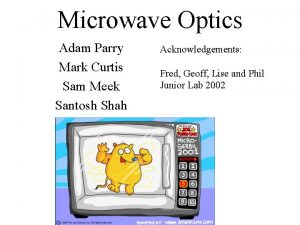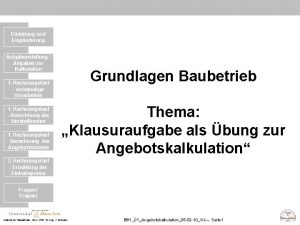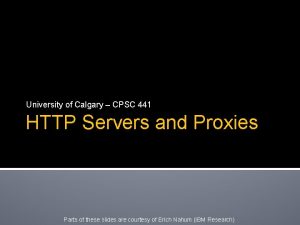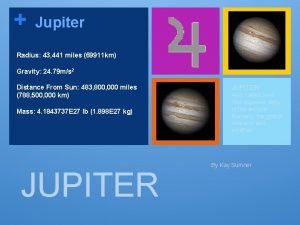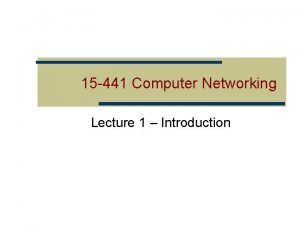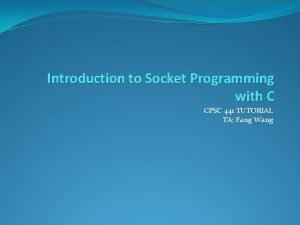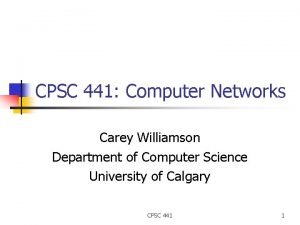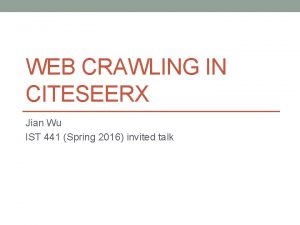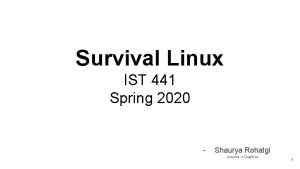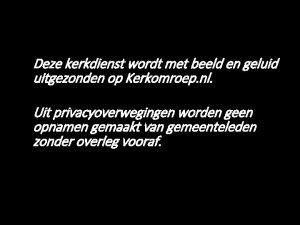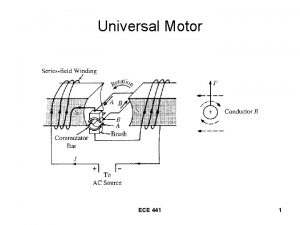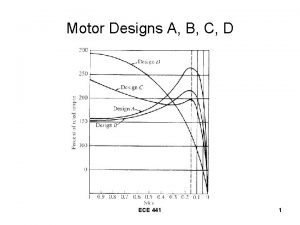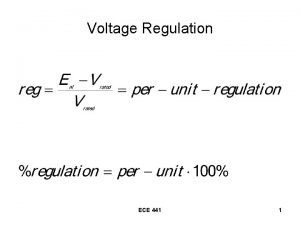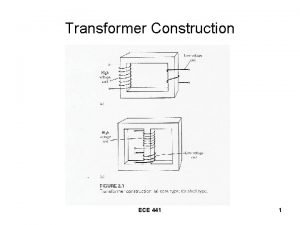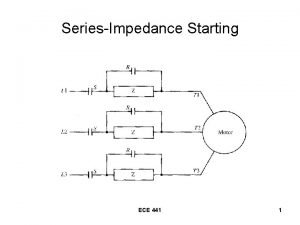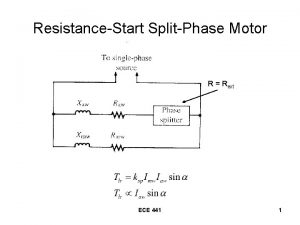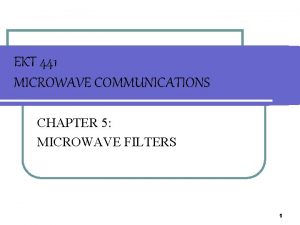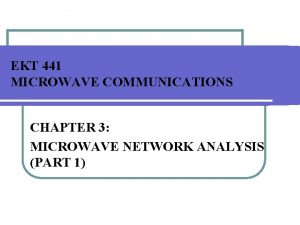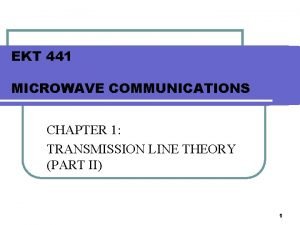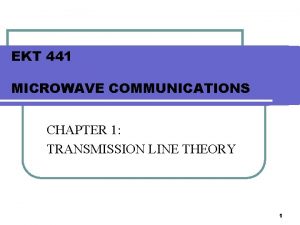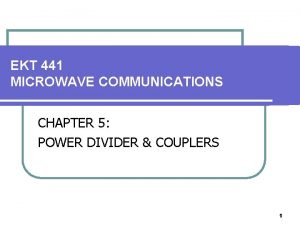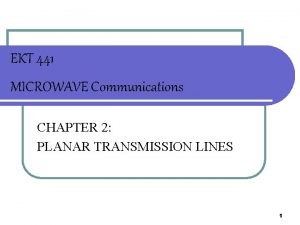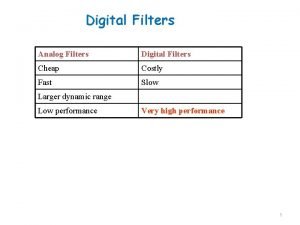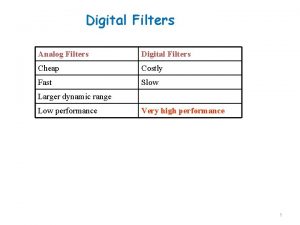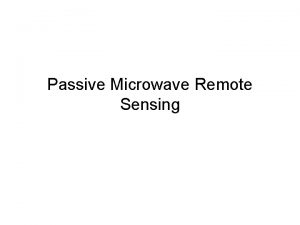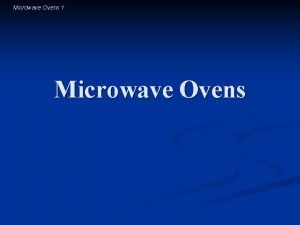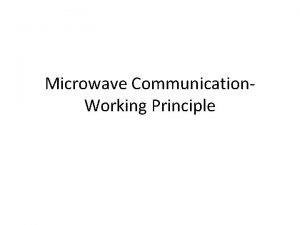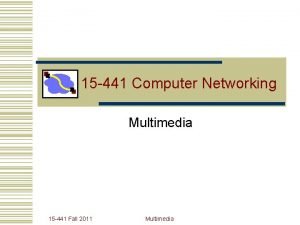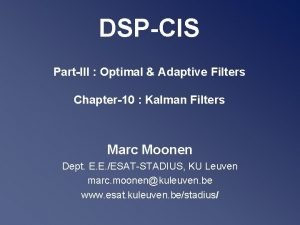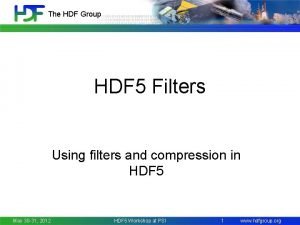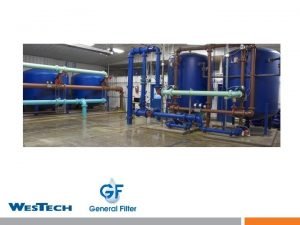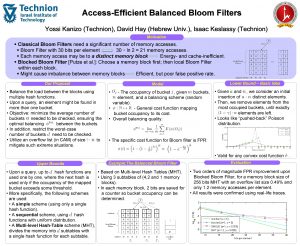EKT 441 MICROWAVE COMMUNICATIONS CHAPTER 4 MICROWAVE FILTERS






![Kuroda’s Identities l As taken from [2]. l l Z 1 Z 2/n 2 Kuroda’s Identities l As taken from [2]. l l Z 1 Z 2/n 2](https://slidetodoc.com/presentation_image_h2/64a7b192e16f84aca075e4484044145e/image-7.jpg)












- Slides: 19

EKT 441 MICROWAVE COMMUNICATIONS CHAPTER 4: MICROWAVE FILTERS PART II 1

Filter Realization Using Distributed Circuit Elements (1) l l l Lumped-element filter realization using surface mounted inductors and capacitors generally works well at lower frequency (at UHF, say < 3 GHz). At higher frequencies, the practical inductors and capacitors loses their intrinsic characteristics. Also a limited range of component values are available from manufacturer. Therefore for microwave frequencies (> 3 GHz), passive filter is usually realized using distributed circuit elements f 2 such as transmission line sections. Here we will focus on stripline microwave circuits. 2

Filter Realization Using Distributed Circuit Elements (2) Recall in the study of Terminated Transmission Line Circuit that a length of terminated Tline can be used to approximate an inductor and capacitor. l This concept forms the basis of transforming the LC passive filter into distributed circuit elements. l l Zc , L C Zo Zo 3

Filter Realization Using Distributed Circuit Elements (3) This approach is only approximate. There will be deviation between the actual LC filter response and those implemented with terminated Tline. l Also the frequency response of distributed circuit filter is periodic. l Other issues are shown below. l How do we implement series Tline connection ? (only practical for Zo certain Tline configuration) Connection physical length cannot be ignored at microwave region, comparable to Zo Thus some theorems are used to facilitate the transformation of LC circuit into stripline microwave circuits. Chief among these are the Kuroda’s Identities (See Appendix) 4

More on Approximating L and C with Terminated Tline: Richard’s Transformation l Zin L Zc , (3. 1. 1 a) l Zin C Zc , (3. 1. 1 b) For LPP design, a further requirment is that: Wavelength at cut-off frequency (3. 1. 1 c) 5

More on Approximating L and C with Terminated Tline: Richard’s Transformation 6
![Kurodas Identities l As taken from 2 l l Z 1 Z 2n 2 Kuroda’s Identities l As taken from [2]. l l Z 1 Z 2/n 2](https://slidetodoc.com/presentation_image_h2/64a7b192e16f84aca075e4484044145e/image-7.jpg)
Kuroda’s Identities l As taken from [2]. l l Z 1 Z 2/n 2 1: n 2 l l Z 1 n 2 Z 1 l l Z 2 Note: The inductor represents shorted Tline while the capacitor represents open-circuit Tline. n 2 Z 1 n 2: 1 7

Example 5. 7 – LPF Design Using Stripline l Design a 3 rd order Butterworth Low-Pass Filter. Rs = RL= 50 Ohm, fc = 1. 5 GHz. Step 1 & 2: LPP Zo=1 g 1 1. 000 H g 3 1. 000 H g 4 1 g 2 2. 000 F Length = c/8 for all Tlines at = 1 rad/s 8

Example 5. 7 – LPF Design Using Stripline l Design a 3 rd order Butterworth Low-Pass Filter. Rs = RL= 50 Ohm, fc = 1. 5 GHz. Step 3: Convert to Tlines using Richard’s Transformation Length = c/8 for all Tlines at = 1 rad/s 9

Example 5. 7 Cont… Step 4: Add extra Tline on the series connection Extra T-lines Length = c/8 for all Tlines at = 1 rad/s 10

Example 5. 7 Cont… Step 5: apply Kuroda’s 1 st Identity. Step 6: apply Kuroda’s 2 nd Identity. Similar operation is performed here 11

Example 5. 7 Cont… After applying Kuroda’s Identity. Length = c/8 for all Tlines at = 1 rad/s Since all Tlines have similar physical length, this approach to stripline filter implementation is also known as Commensurate Line Approach. 12

Example 5. 7 Cont… Step 5: Impedance and frequency denormalization. Microstrip line using double-sided FR 4 PCB ( r = 4. 6, H=1. 57 mm) Zc/Ω 50 25 100 /8 @ 1. 5 GHz /mm 13. 45 12. 77 14. 23 W /mm 2. 85 8. 00 0. 61 Length = c/8 for all Tlines at f = fc = 1. 5 GHz 13

Example 5. 7 Cont… Step 6: The layout (top view) 14

Example 5. 8 Design a low pass filter for fabrication using microstrip lines. The specifications are: cutoff freq of 4 GHz, third order, impedance of 50 ohms and a 3 d. B equal ripple characteristics g 1 = 3. 3487 = L 1 g 2 = 0. 7117 = C 2 g 3 = 3. 3487 = L 3 g 4 = 1. 0000 = RL 15

Example 5. 8 (cont) 16

Example 5. 8 (cont) 17

Example 5. 8 (cont) 18

Example 5. 8 (cont) 19
